Ti stai chiedendo quale inchiostro è migliore per il tuo progetto di stampa: inchiostro a base d'acqua vs Plastisol? Entrambi gli inchiostri sono scelte popolari nel mondo della stampa, ma hanno scopi diversi a seconda delle tue esigenze. L'inchiostro a base d'acqua è amato per la sua natura ecologica e la sua morbidezza, mentre l'inchiostro plastisol si distingue per la sua durata e i colori vivaci.
La scelta dell'inchiostro giusto può creare confusione, ma tutto dipende da fattori come il tipo di tessuto, requisiti di progettazione, e obiettivi del progetto. Whether you’;stai puntando a un traspirante, finitura naturale o audace, stampa durevole, comprendere i punti di forza di ciascun inchiostro può aiutarti a decidere. Entriamo nei dettagli per scoprire quale inchiostro si adatta meglio alle tue esigenze.
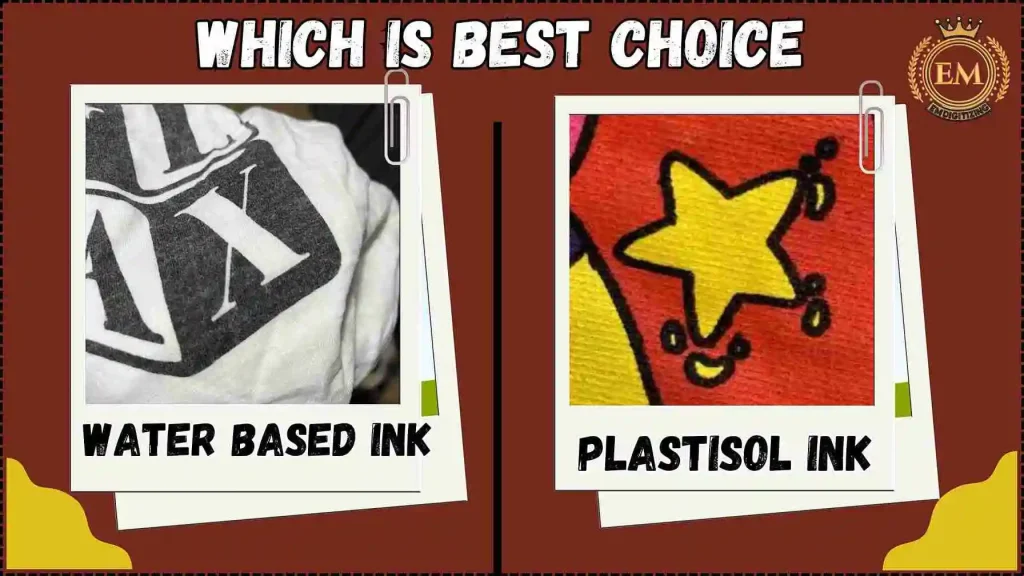
Inchiostro a base d'acqua vs inchiostro plastisol: qual è la scelta migliore
Cos'è l'inchiostro a base acqua?
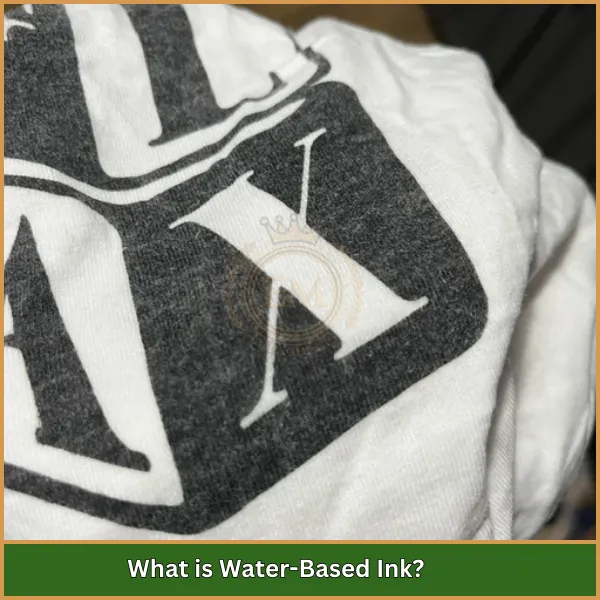
È un tipo di inchiostro utilizzato nella serigrafia che utilizza l'acqua come solvente principale. Ciò lo rende ecologico e facile da pulire rispetto ad altri inchiostri. L'inchiostro penetra nelle fibre del tessuto, creando una finitura morbida e traspirante. L'inchiostro a base d'acqua è particolarmente apprezzato per la stampa su tessuti più leggeri ed è noto per la sua morbidezza, sensazione naturale.
Professionisti
- Eco-friendly: Meno dannoso per l'ambiente grazie ai solventi a base d'acqua.
- Sensazione morbida: Si fonde perfettamente con il tessuto, fornendo una texture traspirante e naturale.
- Ottimo per progetti dettagliati: Produce dettagli nitidi e complessi.
Contro
- Limitato a tessuti specifici: Funziona meglio su tessuti di colore più chiaro.
- Sfide di essiccazione: Richiede una polimerizzazione più precisa per evitare sbavature.
Breve durata di conservazione: Si asciuga rapidamente sullo schermo se non gestito correttamente.
Cos'è l'inchiostro Plastisol?
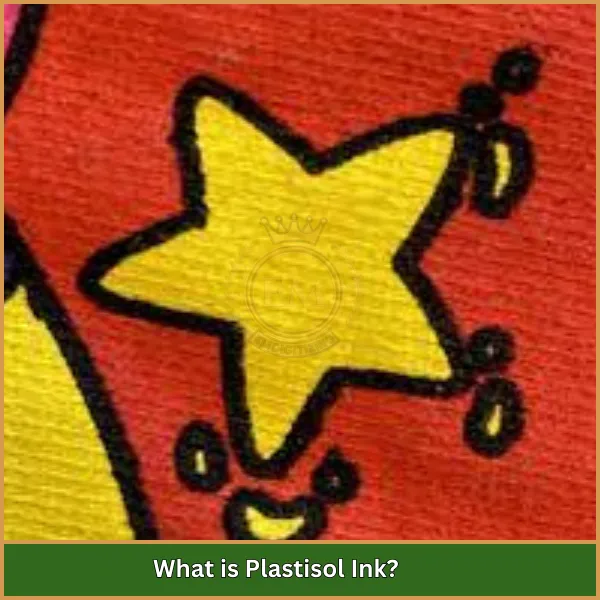
È un inchiostro a base di PVC comunemente utilizzato nella serigrafia grazie alla sua durata e ai colori vivaci. A differenza dell'inchiostro a base d'acqua, si trova sopra il tessuto invece di impregnarlo, creando una consistenza leggermente più spessa. L'inchiostro plastisol è versatile, funziona su una varietà di tessuti, e richiede la polimerizzazione a caldo per fissarsi in modo permanente. È popolare per i design audaci e le stampe multicolori.
Professionisti
- Colori vibranti: Produce brillante, stampe opache, anche su tessuti scuri.
- Versatile: Funziona bene su quasi tutti i tipi di tessuto.
- Lunga durata: Non si asciuga rapidamente, rendendolo facile da riporre e riutilizzare.
Contro
- Sensazione più pesante: Crea uno strato più spesso sul tessuto, meno traspirante dell'inchiostro a base acqua.
- Impatto ambientale: Contiene PVC, che è meno ecologico.
- È necessaria la polimerizzazione a caldo: Necessita di un controllo preciso della temperatura per la polimerizzazione per evitare danni.
Differenze chiave tra inchiostri a base acqua e inchiostri plastisol
1. Durata
L'inchiostro plastisol è noto per la sua eccellente durata, poiché forma uno spesso strato sul tessuto che resiste alle screpolature e allo sbiadimento, anche dopo numerosi lavaggi. In contrasto, l'inchiostro a base d'acqua si integra nelle fibre del tessuto, che può portare allo sbiadimento nel tempo, soprattutto su materiali più scuri.
2. Vivacità del colore
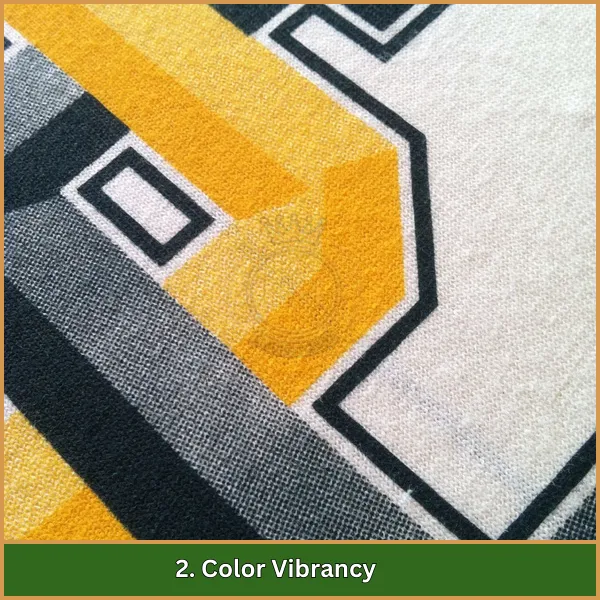
L'inchiostro plastisol offre colori vibranti, colori vivaci con elevata opacità, rendendolo ideale per la stampa al buio tessuti o disegni complessi. Nel dibattito di plastisol vs inchiostro a base acqua, plastisol si distingue per la sua capacità di conferire brillantezza, stampe coerenti, mentre l'inchiostro a base acqua offre toni più morbidi e naturali, più adatto per design sottili.
3. Impatto ambientale
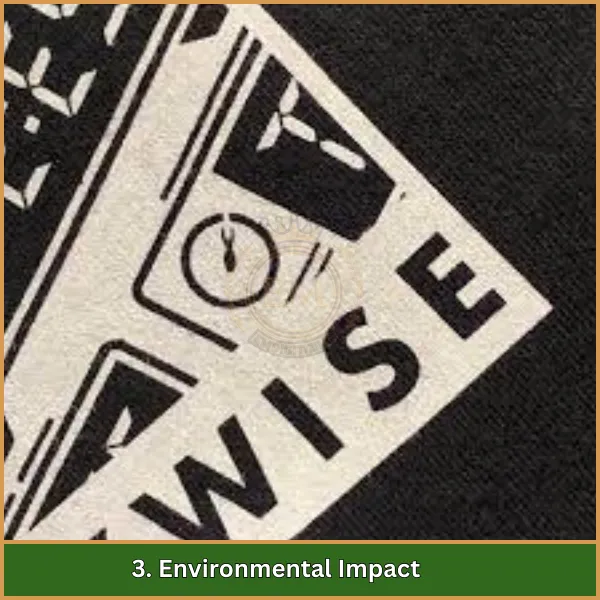
L'inchiostro a base d'acqua è un'opzione ecologica poiché si basa sull'acqua come solvente principale e contiene meno sostanze chimiche dannose. Inchiostro plastisol, essendo a base di PVC, pone preoccupazioni ambientali e richiede metodi di smaltimento adeguati per evitare di inquinare l'ambiente.
4. Texture e finitura
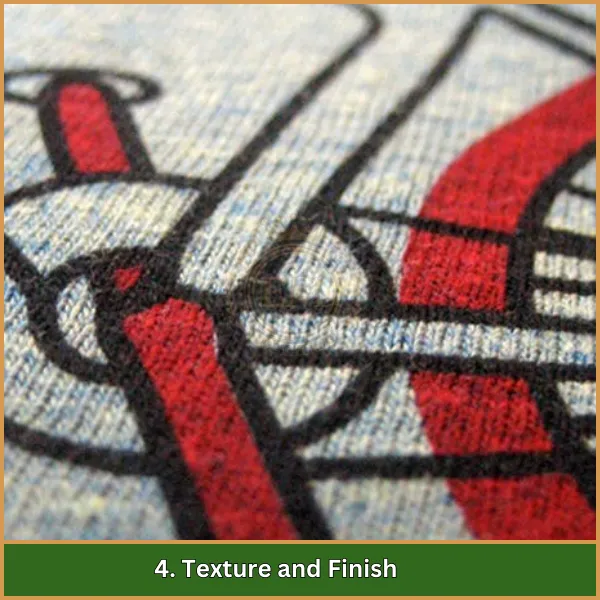
L'inchiostro a base d'acqua penetra nel tessuto, lasciando un liscio, sensazione naturale morbida al tatto. Inchiostro plastisol, d'altro canto, si trova sulla superficie del tessuto, risultando più pesante, consistenza leggermente gommosa che si nota una volta indossato.
5. Facilità d'uso
Quando si confronta Inchiostro plastisol vs base acqua, L'inchiostro plastisol è molto più facile da maneggiare per i principianti. Ha una lunga durata e non si secca rapidamente, rendendolo un'opzione user-friendly. L'inchiostro a base d'acqua richiede più abilità e attenzione, poiché si asciuga più velocemente durante la stampa e può essere difficile da gestire.
6. Processo di polimerizzazione
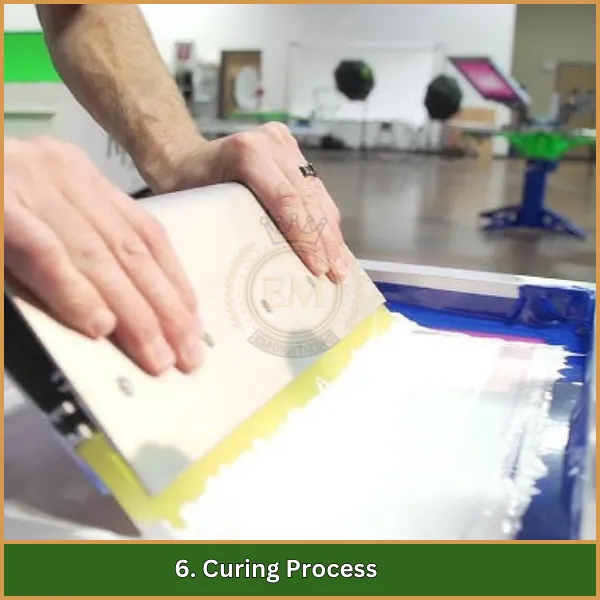
L'inchiostro plastisol deve essere polimerizzato a una temperatura precisa utilizzando termopresse o essiccatori a nastro, assicurandosi che aderisca correttamente al tessuto. Anche l'inchiostro a base d'acqua richiede l'essiccazione, ma il processo spesso richiede più tempo e può richiedere un calore maggiore, rendendolo leggermente più complesso.
7. Compatibilità del tessuto
Quando si tratta di inchiostro serigrafico a base acqua vs plastisol, l'inchiostro a base d'acqua è l'ideale per i tessuti naturali come il cotone, fornendo un morbido, finitura senza soluzione di continuità. Inchiostro plastisol, però, è più versatile e si comporta bene su una varietà di tipi di tessuto, compresi quelli sintetici, rendendolo l'opzione di riferimento per gli indumenti in materiali misti.
Quale inchiostro (Inchiostro a base acqua vs inchiostro plastisol) è la soluzione migliore per le tue esigenze di stampa?
Decidere tra inchiostro a base acqua rispetto a quello plastisol richiede la comprensione degli obiettivi del tuo progetto, tipo di tessuto, e la finitura desiderata. Entrambi gli inchiostri presentano vantaggi e svantaggi distinti, soddisfare le diverse esigenze della serigrafia.
Quando scegliere l'inchiostro a base acqua
L'inchiostro a base d'acqua è ideale per progetti che danno priorità all'ecocompatibilità e alla morbidezza, finitura naturale. Poiché penetra nel tessuto, crea un design traspirante che sembra parte del materiale. Questo lo rende perfetto per:
- Tessuti dai colori chiari: L'inchiostro a base d'acqua funziona meglio con la luce, tessuti naturali come cotone o lino. Non è così vibrante sui tessuti scuri a meno che non si utilizzino inchiostri a scarico.
- Progetti eco-consapevoli: Se ridurre l’impatto ambientale è importante, L'inchiostro a base d'acqua è un'ottima scelta perché utilizza l'acqua come solvente e contiene meno sostanze chimiche dannose.
- Sensazione morbida e design sottile: L'inchiostro diventa parte del tessuto, fornendo una texture leggera e senza cuciture ideale per design vintage o sobri.
Tuttavia, richiede un processo di polimerizzazione preciso e può essere meno resistente su tessuti pesanti o scuri.
Quando scegliere l'inchiostro Plastisol
L'inchiostro plastisol è l'opzione ideale per i colori audaci, design vivaci e versatilità tra i tipi di tessuto. Poiché si trova sulla superficie del materiale, crea uno spessore, strato opaco altamente durevole. Questo lo rende adatto a:
- Tessuti scuri o sintetici: L'inchiostro plastisol offre un'eccellente coprenza, rendendolo ideale per la stampa su colori scuri o miscele sintetiche come poliestere o nylon.
- Disegni intricati e vivaci: L'elevata vivacità dell'inchiostro garantisce stampe audaci e accattivanti, perfetto per disegni multicolori o dettagliati.
- Durabilità e longevità: L'inchiostro plastisol può resistere a numerosi lavaggi senza sbiadire, rendendolo la scelta migliore per gli indumenti che richiedono un uso a lungo termine, come indumenti da lavoro o uniformi.
- Stampa adatta ai principianti: Non secca durante l'uso ed è facile da riporre, rendendolo ideale per chi è nuovo alla serigrafia.
Tuttavia, il plastisol è meno rispettoso dell'ambiente e può creare una sensazione più pesante sul tessuto, che potrebbe non essere adatto a tutti i progetti.
Conclusione
Decidere tra serigrafia L'inchiostro a base d'acqua rispetto al plastisol dipende dalle tue esigenze di stampa specifiche. L'inchiostro a base d'acqua offre un'opzione morbida ed ecologica, perfetto per stampe traspiranti, mentre l'inchiostro plastisol offre colori vivaci e una durata eccezionale per design di grande impatto.
Qualunque sia la tua scelta, la qualità della tua opera d'arte fa la differenza. È qui che entra in gioco EMDigitizing! Siamo specializzati in Servizi artistici vettoriali professionali, offrendo tariffe imbattibili, tempi di consegna fulminei, e qualità garantita. Più, con la nostra opzione di anteprima, puoi vedere esattamente come apparirà il tuo progetto prima che sia finalizzato.
Sei un cliente per la prima volta?? Grandi notizie! Godetevi un enorme 50% sconto sul tuo primo ordine. Lascia che EMDigitizing ti aiuti a trasformare i tuoi progetti in qualcosa di veramente eccezionale!
Domande frequenti
L'inchiostro a base d'acqua utilizza l'acqua come solvente principale, permettendogli di penetrare nel tessuto per un effetto morbido, finitura traspirante. In contrasto, L'inchiostro plastisol è a base di PVC e si trova sulla parte superiore del tessuto, creando audace, disegni opachi con una sensazione leggermente più spessa.
L'inchiostro a base d'acqua penetra nelle fibre del tessuto, donando una stampa naturale e leggera, mentre l'inchiostro plastisol rimane sulla superficie, offrendo vibrante, stampe ad alta opacità adatte a tutti i tipi di tessuto.
sì, ma potrebbe richiedere additivi speciali o pretrattamenti per garantire una corretta adesione e longevità se utilizzato su materiali sintetici.
No, la miscelazione di questi inchiostri non è consigliata perché le loro basi chimiche e i processi di polimerizzazione sono incompatibili, portando a scarsi risultati e potenziali errori di stampa.
